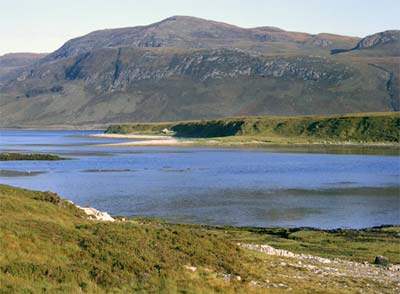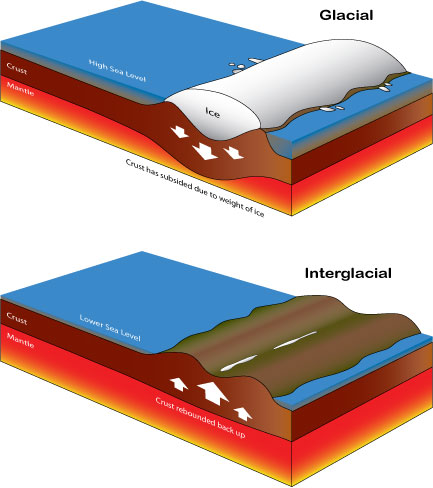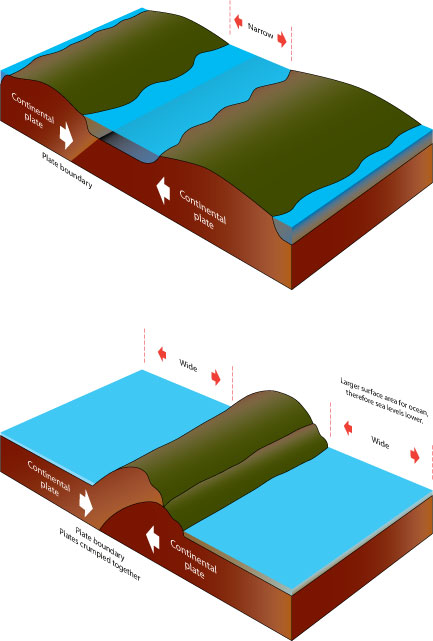Sea level and coastal changes
News stories often link climate change to rising sea levels.
Throughout Earth’s history sea level has constantly changed and, indeed, it is these very changes that generate most of the geological record!
Geology has left us many clues to how the environment has changed over time and whether the sea was higher or lower than it is today.
Maybe the place where you live was once below sea level!
What do we mean by sea level?
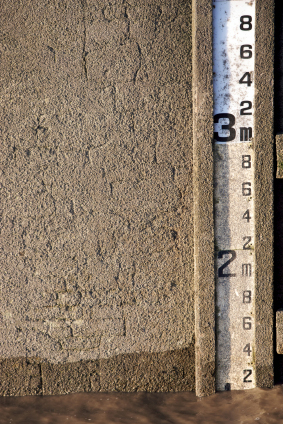
Sea level, or ‘mean sea level’ as it is sometimes known, is the average height of the ocean’s surface between high and low tide.
Scientists refer to it as the equipotential surface of the world’s oceans, which means that its level is affected by the strength of gravity (or, more technically, ‘gravitational acceleration’) around the Earth.
Variations in the gravitational acceleration are themselves caused by variations in the internal density of the Earth.
Changes in tides and wave conditions over time are averaged out to determine a ‘still water level’ that can be used to identify whether the sea level has changed and also the height of the land above sea level.
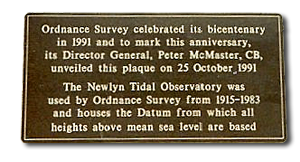
In the UK, height above sea level is measured from the ‘Ordnance Datum’, which is the mean sea level at the tide gauge bolt Newlyn Pier, Cornwall.
More about the UK Tide Gauge Network.
What is sea level change?
Because the surface of the land also moves up and down over long periods of time, sea level changes may be described as ‘relative’ or ‘absolute’.
Relative changes may be observed even though the absolute height of the oceans remains the same.
It is important to realise that when earth scientists talk about a rise in mean global sea level (what we call ‘eustatic’ sea level), local changes may be quite different. This is why local studies of sea level rise and fall are so important.
How much has sea level changed over geological time?
During the last ice age, lots of sea water was stored in ice sheets and glaciers and sea level was, on average, more than 130 metres lower than it is today.
But these sea level changes, related to the growth and melting of ice sheets, happen relatively quickly, taking tens of thousands to hundreds of thousands of years.
Sea levels also rise and fall more slowly, over time spans of millions of years. And these gradual changes have generated the enormously thick sequences of sedimentary rocks that record the long history of geological time.
We would have very little if any of our sedimentary rocks were it not for the fact that sea levels rise and fall!
Why does sea level change?
Sea levels change for many reasons and over timescales that are very different. Sea levels are rising today not only because significant parts of the land-based ice is melting, but also because ocean waters are warming and therefore expanding.
Note that there is no direct effect on sea level when sea-based ice melts, because sea-ice is already part of the ocean system. Ice floats because it is less dense than water and because it displaces an equivalent mass of water there is no increase in sea level as it melts – in just the same way a cold drink does not overflow the glass as the ice cubes it contains melt.
There is, however, a significant indirect effect of Arctic ice melting, which is that the albedo changes.
Albedo is the ability of a surface to reflect sunlight, and ice and snow are very good at reflecting the warming rays of the sun.
As the Arctic ice melts, polar regions will warm even more quickly because the Arctic ocean will now absorb the incoming energy. Thus, warming leads to Arctic ice melting which leads to more warming.
This is a classic positive feedback in the climate.
A eustatic sea level change occurs when there is a global change in the amount of water stored in the oceans, or a change in the geometry of the ocean basins which alters the volume of water they can hold.
When the sea level changes in response to the amount of water stored in ice caps this is called glacial-eustasy.
If the two main ice caps — Greenland and Antarctica — melted, then it is calculated that the oceans would rise by 66 metres.
During glacial periods areas of land are covered with thick layers of ice.
The weight of the ice causes the surface of the Earth’s crust to deflect downwards.
At the end of the glacial period the ice melts and the crust can rebound. This is known as an isostatic sea level change and it causes a relative sea level change as it is the land rising, not the amount of water increasing.
A change in the temperature of sea water also contributes to a change in sea level because sea water expands at higher temperatures.
As the atmosphere becomes warmer, the oceans will absorb some of the heat and increase in volume, which in turn leads to higher sea levels.
Orogeny or mountain building, can decrease sea level by changing the size of the oceans.
The most famous of these is the collision of the Indian and Eurasian plates that formed the Himalaya Mountains.
One relevant consequence of the collision is that a lot of continental crust was inserted under Tibet, leaving a larger ocean basin and therefore lower global sea-levels.
How are changes in sea level linked to the climate?
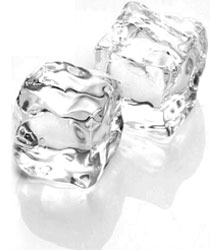
The Earth’s climate and global sea levels are closely linked.
During cold periods some of the ocean’s water is evaporated and stored in ice caps or mountain glaciers, meaning a lower sea level.
During warmer periods sea levels rise as the ice melts and once again is added to the volume of the oceans.
Over the past 100 years the Earth’s climate has warmed a little less than 1°C, and as temperatures rise thermal expansion of water will add to sea level rise.
